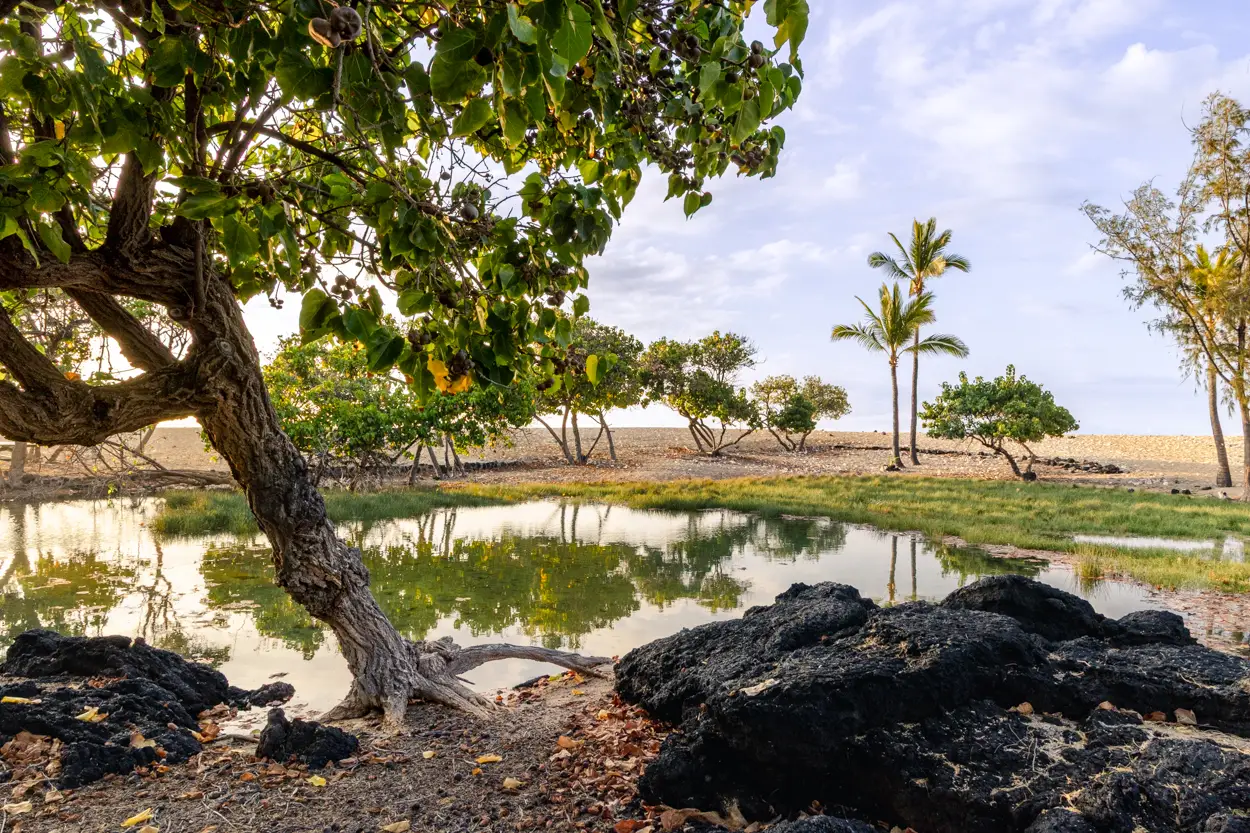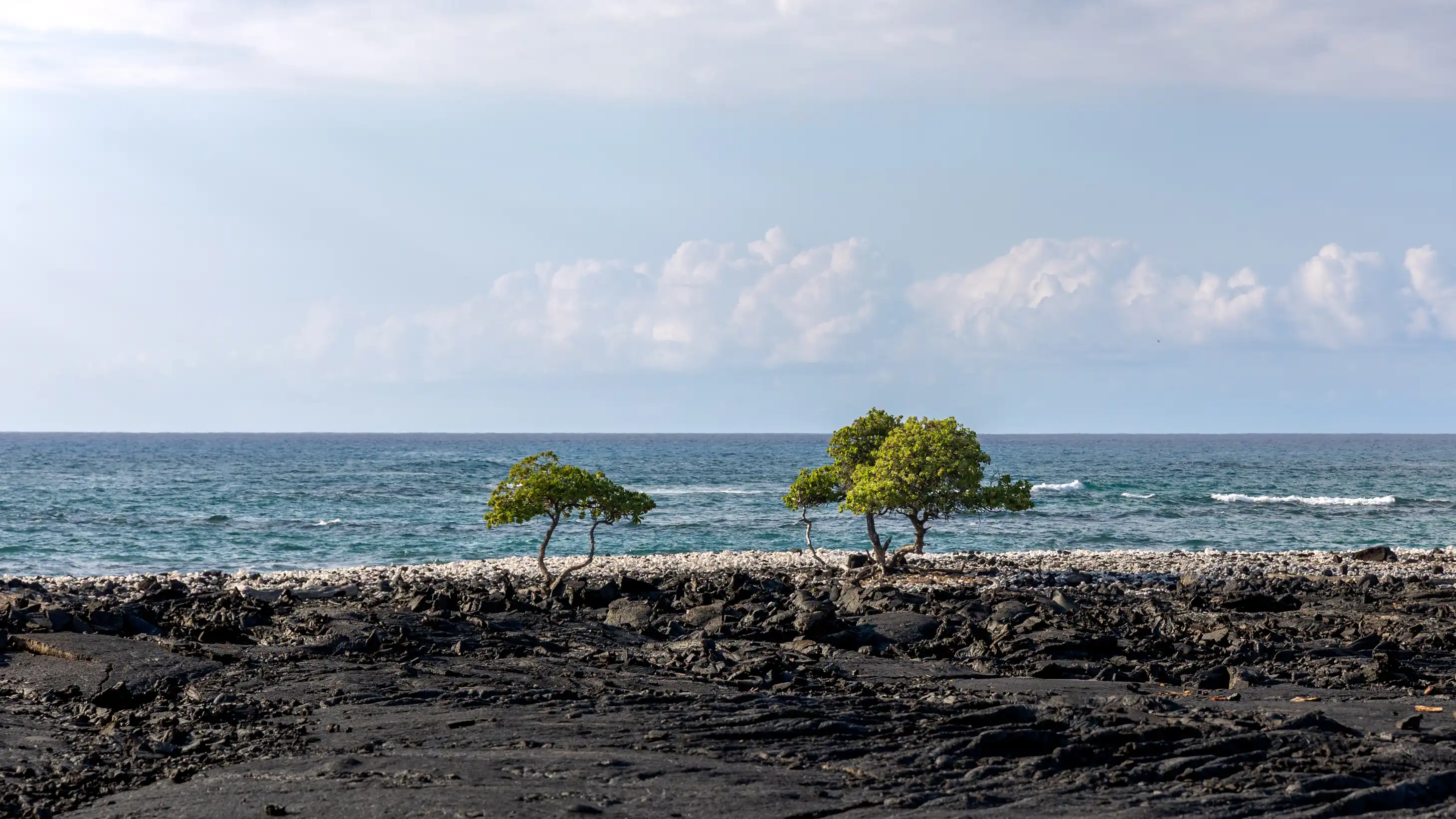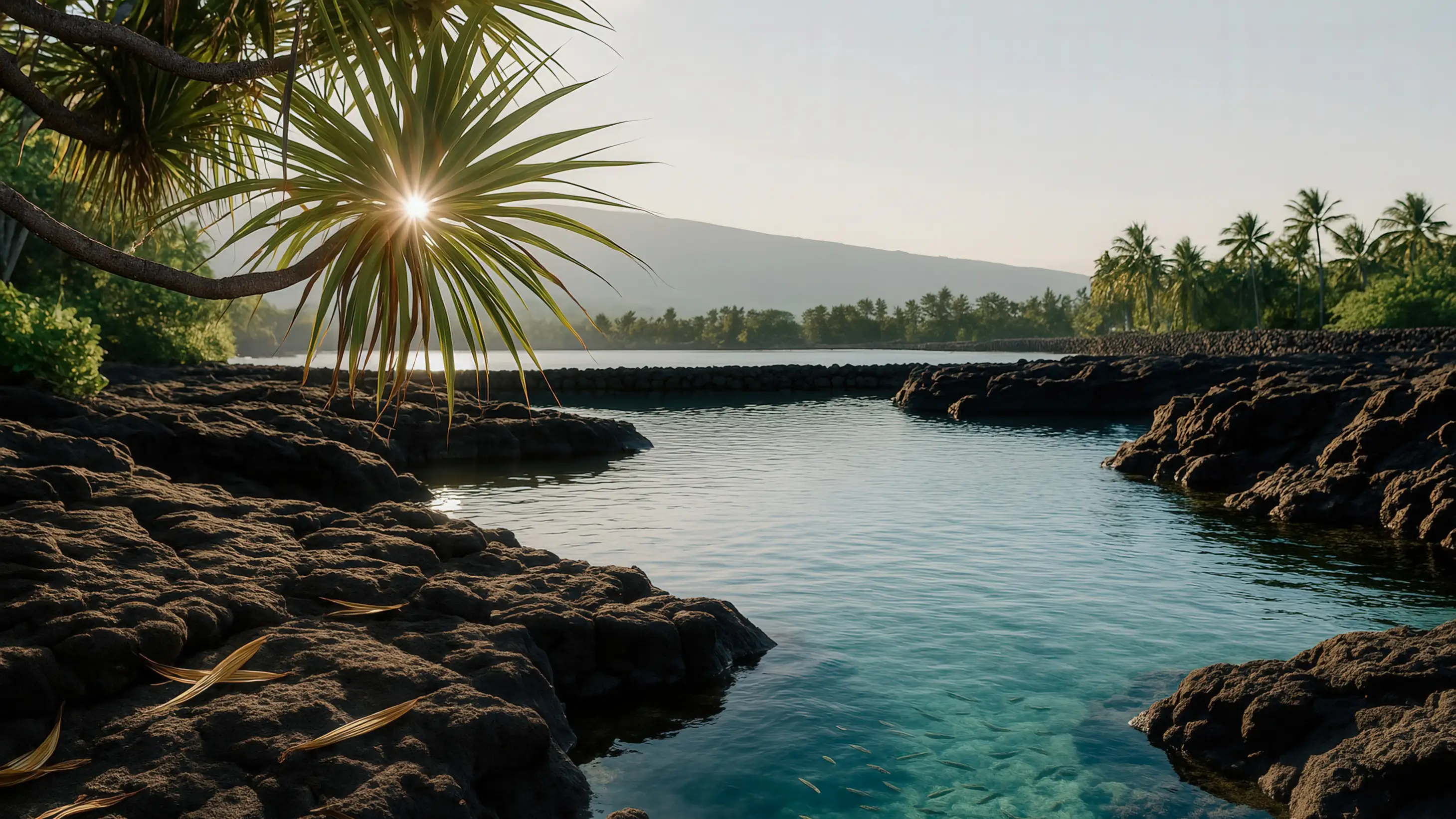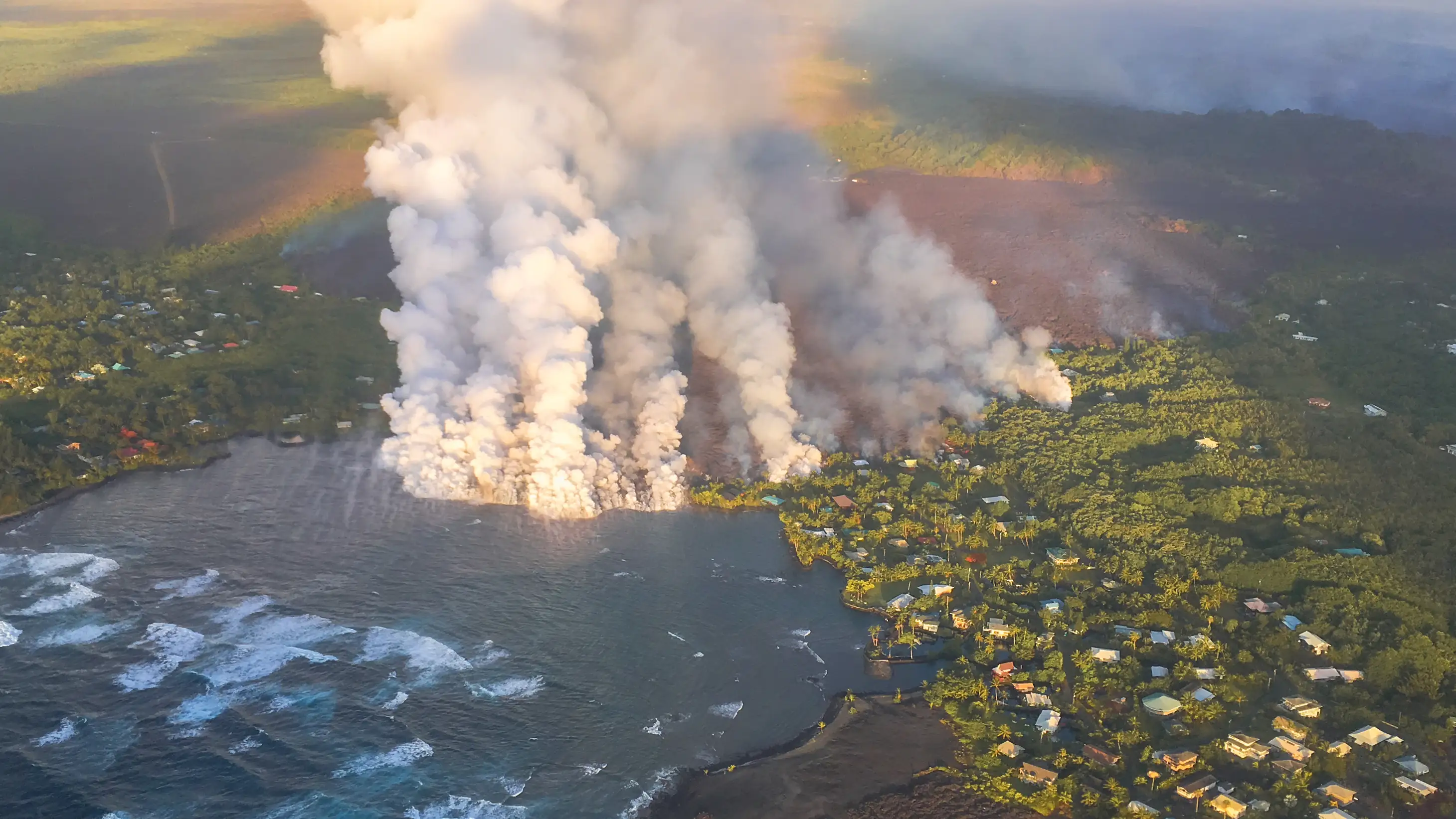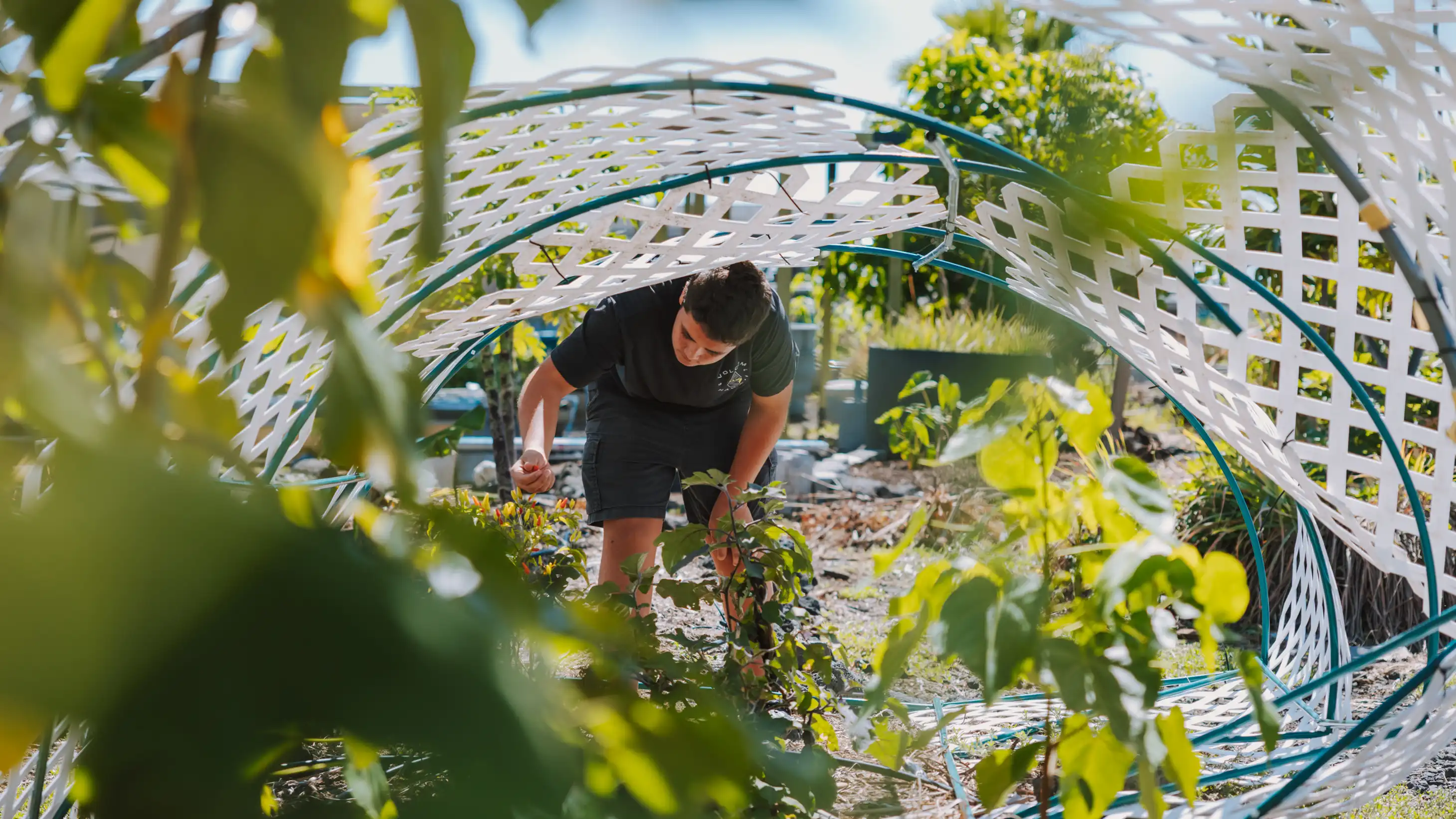Naturalist Bobby Camara introduces the fishponds of Pāʻaiea and nearby areas like Makalawena by reflecting on how their structure and function emerged from the natural features of the coastline. Rather than building entirely from scratch, early Hawaiians worked with what was already present, including anchialine pools, low-lying lava flows, and rocky shorelines, to create thriving aquatic systems.
You didn’t just start from scratch. You started with a natural embayment.
How much of Pāʻaiea was made? How much of it was already existing?
So some people wonder how much of the pond was constructed, how or made, and I would believe, or I, I do believe that as with all the other fish ponds, you didn’t just start from scratch. You started with a natural embayment, an area of maybe a concentration of anchialine pools, or maybe a biggish pond over here, and another one over there. Someplace where the lava flows were pretty much at sea level. Maybe rocky, a rocky point full of those, you know, many little islands like the stars in the heavens. And what they would’ve done is build a wall on the kuapā, on the outside edge of where they wanted their pond to be. And then, you know, they would build other walls inside, perpendicular to the shore at various places. You know, we have no idea about the interior architecture of that pond, but we can see places like at, for instance, Makalawena. Makalawena has Kapoʻikai pond, which is a really big wetland, but right next is Awakeʻe, and Awakeʻe is an ʻaʻā lava flow with lots of little anchialine pools on it.
They were not just engineered systems. They were living landscapes.
And, you know, if that were the case at Pāʻaiea, the whole thing could have been considered essentially a big fish pond, even though they weren’t contiguously connected all the time. But that kind of variety of habitats, the ʻaʻā pools at Awakeʻe contrasting with the bigger Kapoʻikai pond at Makalawena, and then other littler anchialine pools makai of Kapoʻikai would’ve made lots of habitat. And not only for fish; we talked about fish and crabs and limu, but little ʻōpae, the red shrimp, the ʻōpae ʻula, these tiny little shrimp like this that populate the ʻaʻā shorelines of the island.

And unfortunately, recently we’ve had introductions of guppies, or what we call mosquito fish popularly, and guppies love eating ʻōpae. I mean, the guppies are not that big, but the ʻōpae are small enough that the guppies eat ‘em. And so then ponds that have guppies along the shore don’t have ʻōpae. But you kill the guppies with something like rotenone, and all of the ʻōpae come back, because they’re not living only in the pond. They live in all of the cracks of the lava surrounding all of the pond. So if you provide them a home or an opening, if we go and find an area of ʻaʻā that’s close to the ocean, that’s just ʻaʻā lava or even pāhoehoe,and you go and excavate out with dynamite or a backhoe with a rock breaker, and then build a new pond, the ʻōpae will show up there. It’s remarkable. And so the water will look red. It’s really, really cool.

So the habitats would’ve been varied, and ʻōpae ʻula are valuable because they were used as chum, or palu. ʻŌpae ʻula were valued because they were used as bait or chum to catch schooling fish, especially like ʻōpelu, which is also a very, very favored fish of people who lived here. So Kamehameha, his konohiki Kepaʻalani managed the aku and also the ʻōpelu resources of the waters of his land.

The ʻōpae ʻula would’ve been harvested in those scoop nets that I described earlier. You know, the hoop made of a curved branch of ʻūlei with a really fine mesh of ʻolonā, a really strong fiber only found in Hawaiʻi. You would’ve made a really, really fine, fine mesh net and then just scooped out the ʻōpae, put them in a ball maybe with sweet potato, because for some reason the fishermen use sweet potato. Or today, sometimes they use pumpkin to hold the ball together to make like a snowball, but full of ʻōpae. So you could pack the ʻōpae into the ball and then release it into the ocean, and then that would attract all of the fish, and you’d have your net and catch the fish and go home.
Anchialine Pools of Kekahawaiʻole
Anchialine pools, such as Hoʻonā or Mahaiʻula, along Hawaiʻi island’s western shore, are a common sight. These unique coastal pools are home to ʻōpaeʻula, tiny red shrimp that sometimes gather in such abundance they turn the water a deep red.



